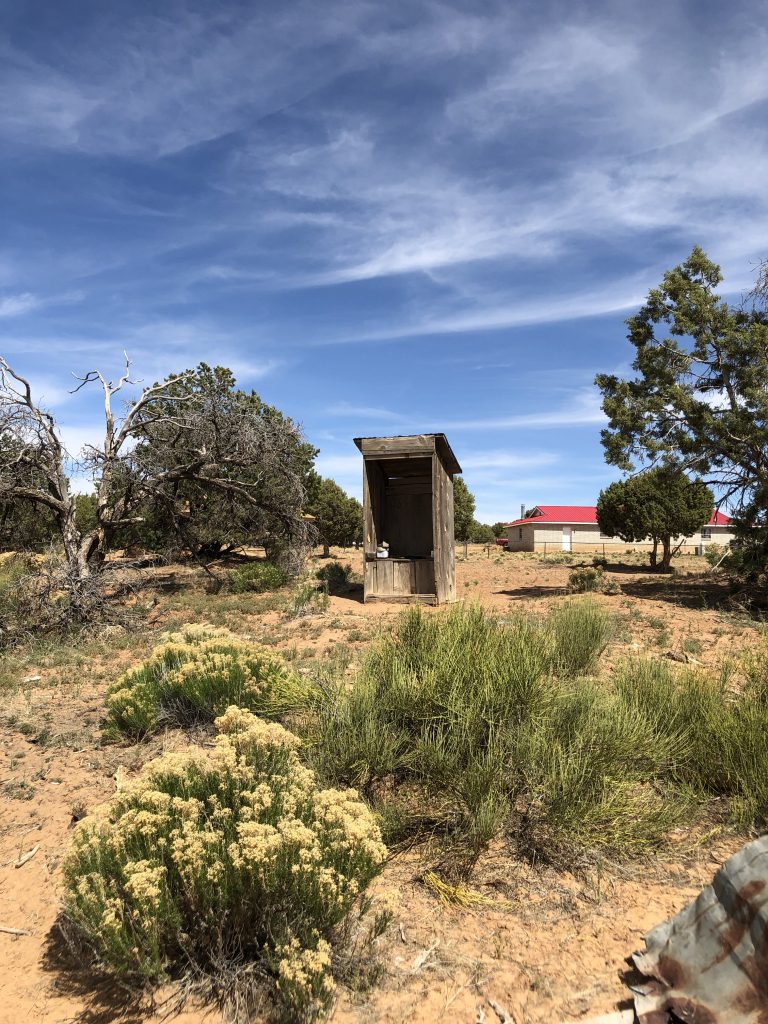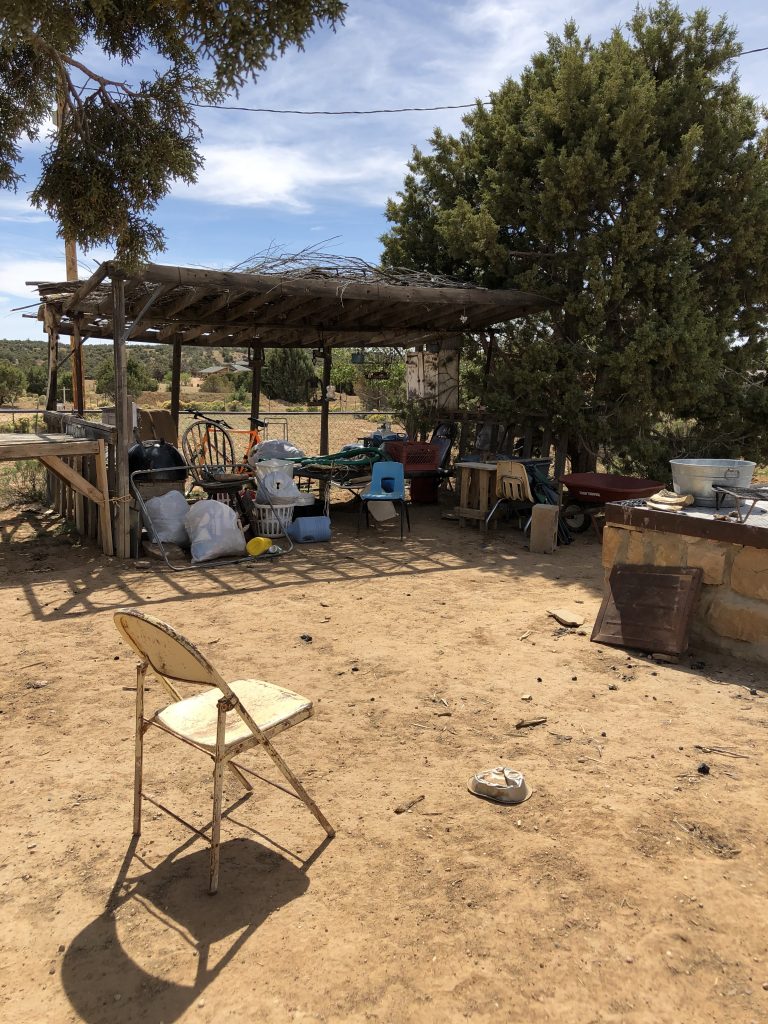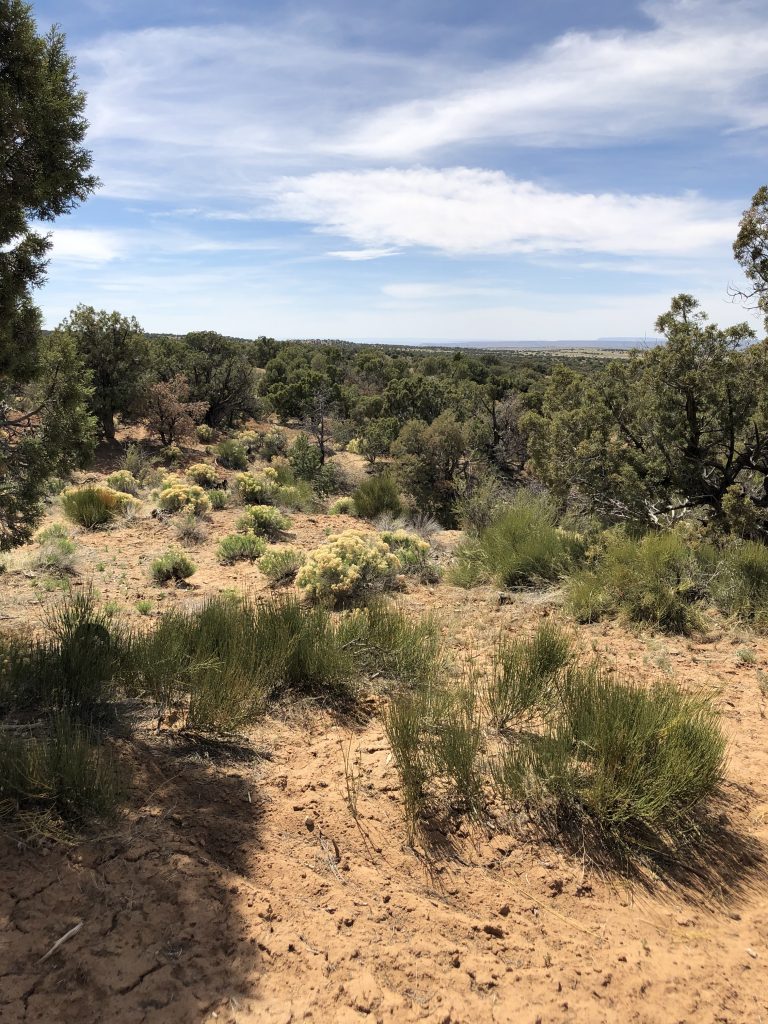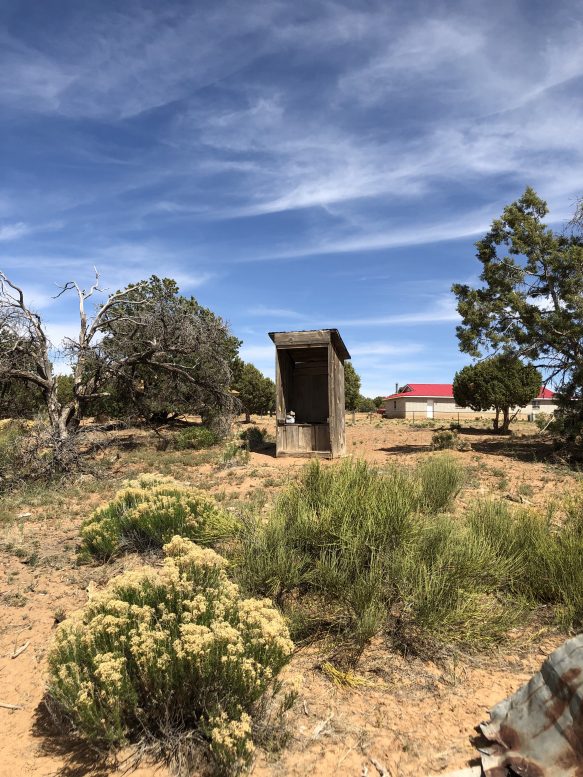By DAVID DUPONT
BG Independent News
For more than 20 years, students from Bowling Green State University have ventured west to spend spring break in the heat and dust of the Navajo Reservation in Arizona.
The trip first started by Bill Thompson was intended to be about social work, said Gordon Ricketts, of the School of Art faculty. Then when he got involved about 18 years ago it added an arts component.

It really was about pulling students out of their usual lives and giving them an experience in far different place in a different culture, he said. The 24-hour drive from Northwest Ohio brings them to another world.
That other world Like everything else, the trip had to be canceled this year because of the COVID-19 pandemic.
By the time students would have arrived, the pandemic had already arrived in the Navajo territory that sprawls over Arizona and New Mexico.
Dolly Manson, who along with her husband Amos Johnson, has worked with BGSU students said that the coronavirus is reported to have been brought into the reservation in early March.
A Nazarene religious camp brought in a speaker from Washington State where the virus had taken root.
She said people reported he was coughing the entire time he preached. Shortly after the first cases were reported. Th first death was a woman, a clanswoman of Manson’s.
As of May 9, the Navajo government website reports there have been 98 deaths and 2,973 cases.

Monson said that about 150,000 Navajo live on the reservation. That’s 65 deaths per 100,000 people, and an infection rate of 2 percent . For comparison, Wood County has had 23 per 100,000, and a reported infection rate of less than 0.2 percent.
Manson said it’s hard to get information on who those deaths given how spread out people are. “We don’t know how many relatives are gone.”
Manson and Johnson live in Dził Yijiinin northeastern Arizona with Manson’s 84-year-old mother in taking care of her and “making sure she doesn’t go anywhere.”
Manson teaches the Navajo language at the University of New Mexico in Albuquerque. She returned to the reservation for spring break, and then was told not to return because of the COVID-19 pandemic. Now she teaches remotely as best she can with the limited internet access. She relies on use.net to stay connected with her students.
For school children that makes home schooling during the pandemic a challenge.
Johnson, who works for the Bureau of Indian Affairs in Pinon, is deemed essential and still reports to work.
The religious revival was held on March 7, and those who attended came from all over. As they returned home they spread the virus.
One man and his wife returned, and she fell ill. They didn’t know at the time what it was. He employed at a school and continued to work, until he was too ill, and he and his wife were brought to Phoenix where they were diagnosed with COVID-19.
The first person to die, Manson’s clanswoman, was a teacher’s assistant at the school
For some traditionalists, Manson said, this was a result of people falling away from their ceremonies and language. “This Christianity was not supposed to be for us,” they argue. “That’s why this invisible thing is invading us here.” And they fear it will doom the Navajo people.
The reservation was a place with a pre-existing condition.
People live in multi-generational households. Partly it’s tradition, but it’s also necessity because of the lack of housing.
Many do not have running water, which makes regular hand washing impossible. And the homes are open to the weather, so the dust, from daily windstorms, blows in. This reflects the Navajos remaining close to nature.
But with so little water cleaning is impossible.

Many homes also lack electricity. To buy groceries people near here have to drive 25 miles over dirt roads to Pinon. Because they lack electricity, they can only keep a limited amount of fresh food.
Manson said that diabetes and respiratory illness are rampant.
The respiratory illness are result of the dry dusty conditions, which have been getting worse, as well as mining waste, she said. “A lot of people were not well from those things already.”
The health facilities are little more than clinics, she said, and inadequate to the people’s needs.
All this is exacerbated by the pandemic.
“I think we’re being ignored,” Manson said. “The problem is huge.”
She said she was taught that the treaties signed with the federal government would provide the resources for decent schools, health care, utilities, and roads.
But the government, she said, pleads lack of funds. The conditions on the reservation are hidden out of sight.
“The world doesn’t know about this. We’re like a Third World country out here. No one knows or cares.”
The education doesn’t prepare the students to get ahead, and there are few jobs on the reservation, where the unemployment rate is reported to be over 40 percent.
Young people, she said, have to go to Albuquerque or Phoenix to find work. Still, she said, a lot of them still return home to the reservation on weekends.
“This is ‘home’ home. This is the land they want to
hang onto.” They feel society wants them to become acculturated and assimilated, and then move away so others can take the land.
But they don’t want to lose the land. “They want to stay put even though we don’t have all the nice things people out in the world enjoy.”

